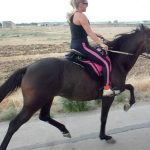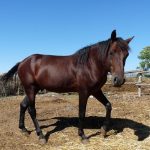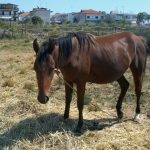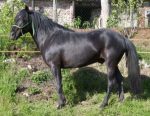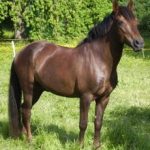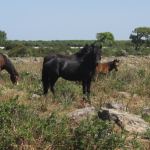Arravani Horse
The Arravani Horse is a Greek horse that has extensively been used by the early Greek people throughout the world in the Greek space, especially for transportation and different agricultural activities. At present, this horse is still used in some mountainous parts of Greece for the latter activity. This breed is famous for its elegant looks, as well as its docile temperament, willingness to work, kindness, high level of intelligence, and love for human presence. These virtues have made them suitable even for children, beginners, and disabled people. Unfortunately, this breed is in danger of extinction and only about 200-300 of them are left in the world today.
Arravani Horse Pictures
- Arravani Horse Images
- Arravani Horse Pictures
- Arravani Horse Stallion
- Arravani Horse
- Arravani Horses
- Images of Arravani Horse
Quick Information
| Behavioral Characteristics | Noble, willing, adaptable, docile, affectionate |
| Physical Traits | Features show well adaptation to travel through mountainous regions; the head is small but finely cut with large eyes and set on a strong neck, straight lines and a short back; well-shaped chest, quarters are generally inclined with the tail being set on a high spot; the hooves are small but hardy, giving it an incredible balance while travelling |
| Coat Colors | Gray, black, chestnut, white, dark brown |
| Height/Size | 12.3 – 14.6 hands (average adult male and female) (stabled individuals tend to become a little taller) |
| Weight | Average |
| Common Uses | Racing, working (for agriculture and transportation) and for riding purposes (now mainly for pleasure riding) |
| Health Problems | Generally durable and healthy |
| Type | Riding horse, Working horse |
| Ancestors (Bloodlines) | Thessalian horse, Dorian pony, Roman horse, Arabian horse |
| Popular Traits | Multi-talented, excellent for riding, easy trainability, durable, enjoys human company |
| Feeding/Diet | General horse diet including hay, grass, grains, etc. |
| Country of Origin | Greece |
| Breed Information, Associations & Registries | Breed Club |
Video: Arravani Horse Riding
History and Development
Initially, this breed was developed by crossing the Dorian ponies with the Thessalian horses from South Greece, and later, many other genes of other breeds were also added to its blood. After almost a thousand years, the Roman horses too contributed to their genes. All these genetic influences resulted in a sure-footed and robust equine, accompanied by a great demeanor.
Still later, the famous Arabian horses also lent their genes to this breed during Turkish trade, which again added some elegance and polish to it.
Since then, the Arravanis were extensively used by the local farmers for agricultural purposes and transportation through the rough mountainous paths for thousands of years. They gradually became well-known for their docile temperament, which was often portrayed while working high atop the mountains, since in such areas, panic-stricken animals had no choice to run.
However, unfortunately, with the introduction of vehicles and advancement of technology, the importance of these horses gradually started to diminish in the largely-rural Greece. This eventually lead to a decline in their numbers dramatically as the locals started to sell them off, as well as export them to Italy for meat production. This breed, at present, is hardly found in its native country and is facing the threat of extinction.
Interesting Facts
- Arravanis move in side trot, called the ‘canter’ pace, making them very safe and comfortable for the rider.
- Many old vases with paintings of the Arravanis have been found in Greece, which is evident of the fact that the Greek people loved the Arravanis.


